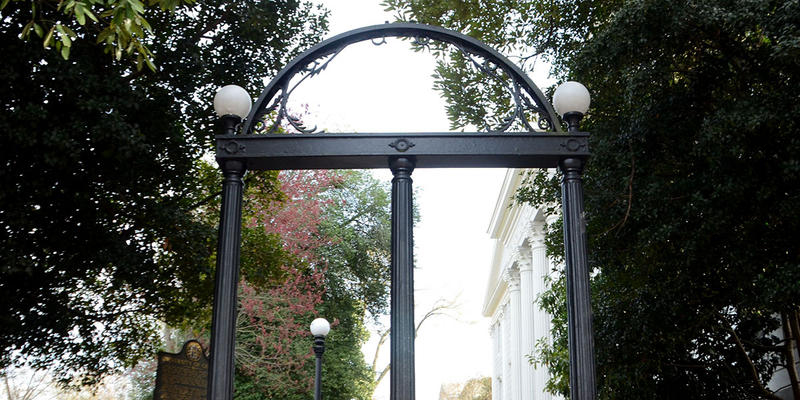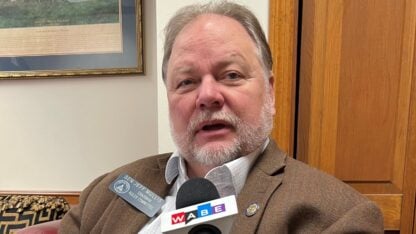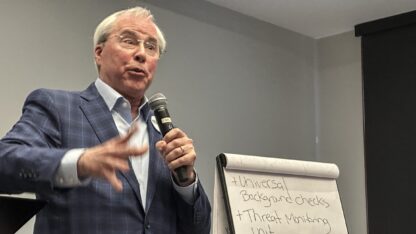State Leaders Look To Ga. Colleges To Help Fill Jobs

Hear the broadcast version of this story.
In three years, two-thirds of Georgia’s jobs will require some type of post-high school education, but the state isn’t currently producing enough qualified candidates to fill those positions. So lawmakers, educators and college administrators are trying to come up with solutions.
The Skills Gap
In 2013, Georgia launched an initiative called “Complete College.” The program aimed to help the state meet workforce needs by increasing its number of two- and four-year college graduates by about 20 percent. That’s a high goal, according to David Spence, president of the Southern Regional Education Board.
“The challenge is we’ve never faced a challenge like this,” he says.
To meet graduation goals, colleges will have to greatly increase enrollment, Spence says. He points out the importance of strengthening K-12 education programs and ensuring students are ready to take on post-secondary education. But he also says colleges and universities will need to consider accepting students who traditionally haven’t gone to college.
“We know they’re going to be increasingly lower-income than we’ve had in the past,” Spence says.
Money Matters
That feeds into another existing problem: college affordability. Although Georgia’s Board of Regents didn’t raise college tuition costs for the 2016-17 school year, most students saw their rates go up by at least 3 percent per year during the previous four years. The increases were higher at research universities, like the University of Georgia and Georgia Tech.
Officials with the university system say they’re concerned potential students could be priced out of college. So, the University System of Georgia has launched several initiatives addressing the problem. Chancellor Steve Wrigley says many of the programs are designed to help students finish degrees faster, so expenses are minimized.
“As part of our ‘15 to Finish’ effort, campuses encourage students to take 15 credit hours a semester, thus shortening the time it takes to graduate,” Wrigley told a House committee recently. “Our institutions also increasingly use an early alert system to monitor student performance so that a low test grade may signal a counselor to provide tutoring and enable the student to complete the class successfully.”
Colleges also give students credit for work or military experience. And the USG has streamlined its remedial education program so that students don’t flounder by spending money on courses that don’t bear credit.
Even with programs aimed at saving students money, officials say there’s still a need for more financial aid. Georgia’s HOPE program pays a percentage of tuition and fees for students who earn and keep certain grades, but it only reaches about 36 percent of university students and 8 percent of students working on two-year degrees.
The Need For Aid
That’s caused some advocates and lawmakers to call for a needs-based scholarship. That is, one that is based on a family’s income, instead of hinging solely on grades. Georgia has a small program like that, called REACH. It provides a $10,000 scholarship to students who have a 2.5 grade point average and clean discipline records. Students, like DeKalb 8th grader Ashley Navarro, are identified in middle school.
“I come from a minority family, where getting a job is really hard, because you have to be legal and it’s really hard to get a job,” Navarro told a group of DeKalb business leaders recently. “This scholarship has provided an opportunity for me to actually go to college and have a better opportunity for myself.”
Still, some lawmakers say Georgia needs a bigger program that can reach more students.
“We can’t get to these families,” says State Sen. Fran Millar, R-Dunwoody. He’s working with other lawmakers and advocates on developing a needs-based scholarship program. “When I go out and talk to the president of Georgia Gwinnett College, and he starts with 13,200 young people. And within a month, he’s down to 12,400 because somebody can’t afford $400 or $500 … that’s a tragedy.”
Millar expects to present data on a new needs-based program to the Legislature in March. He says legislation backing the plan may be introduced in 2018.
He’s not the only one working on the issue. The Southern Regional Education Board is also studying the problem, and trying to figure out how Georgia can expand enrollment enough to meet workforce needs.
The state Legislature is working to maximize the amount of lottery funds designated to the HOPE program, and lawmakers are considering a bill that would legalize casinos, with some profits benefiting HOPE.
Georgia stakeholders hope if they make college more affordable, more people will enroll, graduate and enter the workforce.
9(MDAxODM0MDY4MDEyMTY4NDA3MzI3YjkzMw004))








